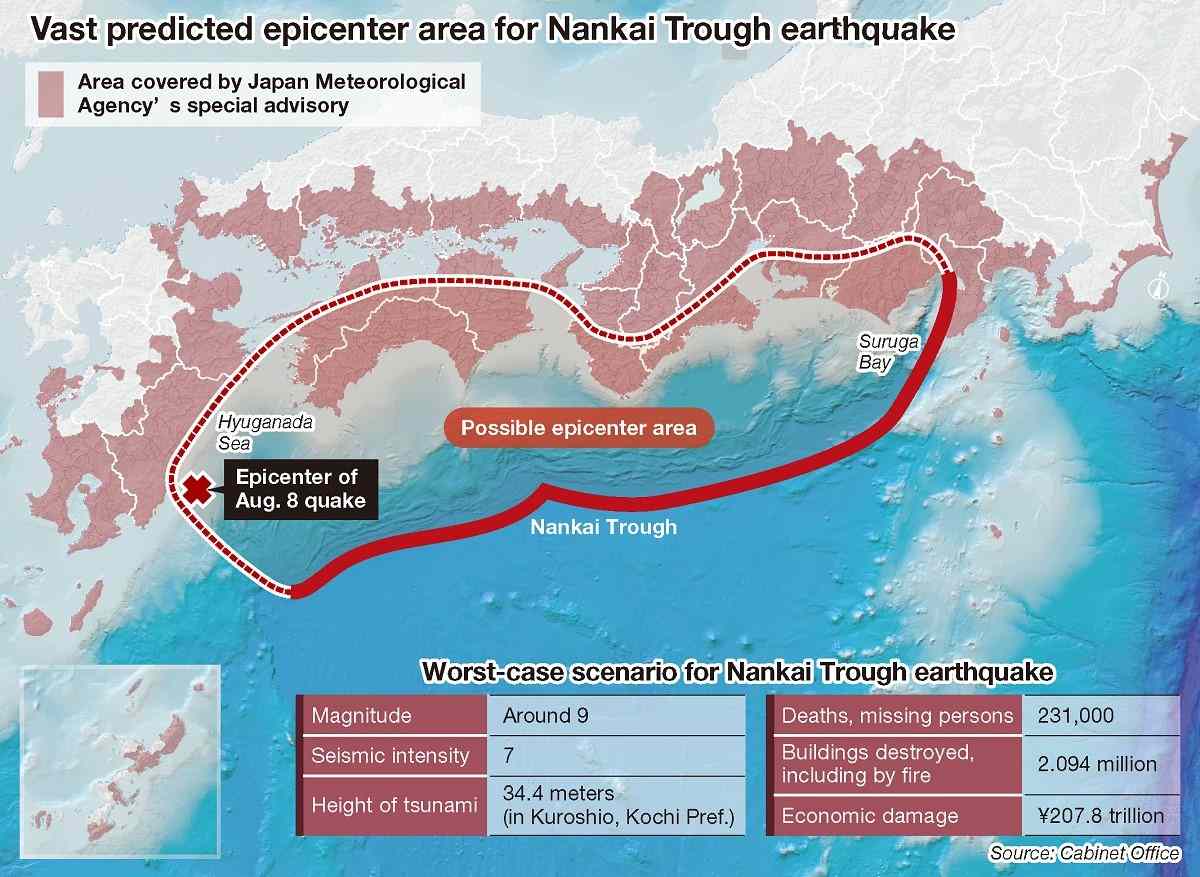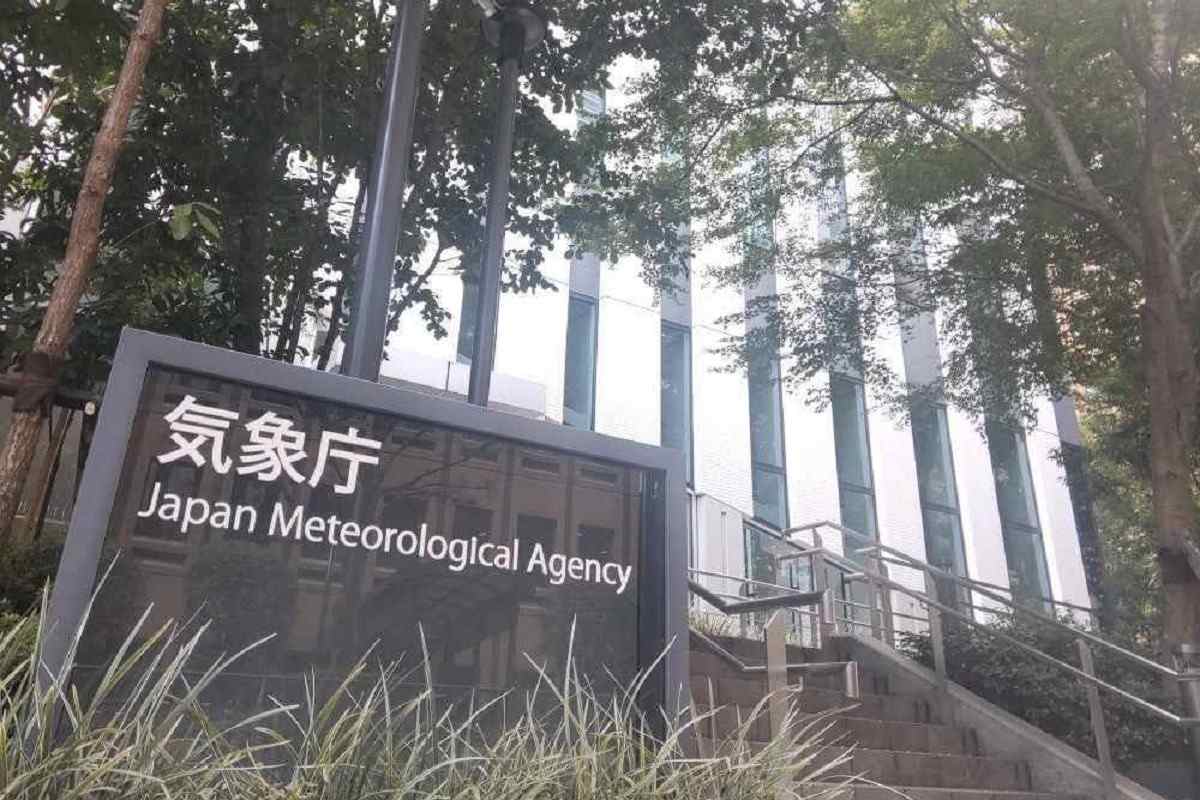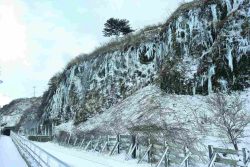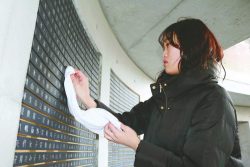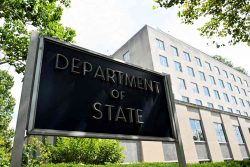Monitoring of Nankai Trough Heightened but No Abnormal Changes Observed; People Urged to Reexamine Disaster Preparedness
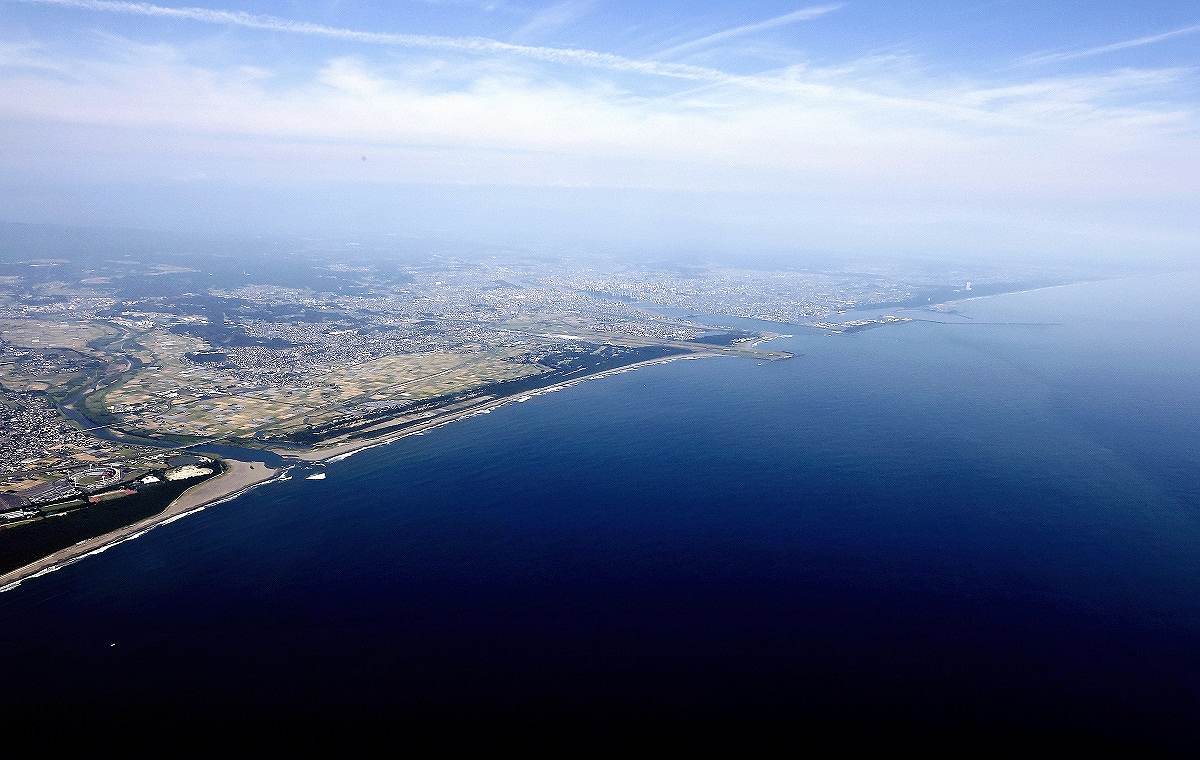
The Hyuganada Sea, the epicenter of the latest quake, and the city of Miyazaki is seen from a Yomiuri Shimbun aircraft on Friday morning.
6:00 JST, August 11, 2024
Following its first issuance of a megaquake advisory called the Nankai Trough Earthquake Extra Information, the Japan Meteorological Agency has been monitoring seismic activities in the assumed focal region of the quake attentively.
Although no abnormal changes have been reported thus far, caution is required in anticipation of a possible subsequent quake in the region of the largest scale.
“Although the likelihood is low that a megaquake will occur anytime soon, people are advised to seize this opportunity to reexamine their disaster preparedness measures,” the agency said.
‘More active than usual’
Kiyoshi Takeda, head of JMA’s Office of Large-scale Earthquake Analysis, explained to reporters on Friday evening the status of the Nankai Trough following the agency’s issuance of the advisory.
“Seismic activities in the Hyuganada Sea are more active than usual,” he said.
On the same evening, the agency released the Nankai Trough Earthquake-Related Commentary on the status of seismic activities in the assumed focal region.
The agency is monitoring the ground expansion and contraction with strain gauges, as it is believed that a huge earthquake is more prone to occur when the state of the plate boundary changes in a short period of time.
“We will continue monitoring the fluctuations attentively,” Takeda said.
29 prefectures covered
The area covered by the ongoing megaquake advisory extends over as many as 707 cities, towns and villages in 29 prefectures, mainly on the Pacific Ocean side of the country from Ibaraki to Okinawa prefectures.
In the event of a Nankai Trough mega earthquake, these are areas that could be hit by tremors with an intensity of a lower 6 or higher on the Japanese seismic scale of 7 or tsunamis of 3 meters or higher. They were designated by the government in 2014 as “disaster prevention measures promotion areas.”
According to the government’s damage predictions, if the largest-scale Nankai Trough earthquake were to occur, an extensive area from Shizuoka to Miyazaki prefectures would be hit by tremors with a maximum intensity of 7 – the same level as in the Great East Japan Earthquake. Tsunami as high as 34 meters would hit coastal areas in a matter of a few minutes. The number of deaths or missing persons could exceed 230,000.
The most recent earthquakes along the Nankai Trough were a magnitude 7.9 tremor in 1944 and a magnitude 8.0 tremor in 1946. Historically, huge earthquakes have occurred at intervals of 100 years to 150 years, raising concerns over the next massive quake.
Naoshi Hirata, a professor emeritus at the University of Tokyo and chairman of the agency’s evaluation study council, said: “The latest M7.1-class earthquake occurred at the western edge of the assumed focal region. When the largest-class quake occurs, it could cause damage over a wide area. So, it is important to reinforce preparedness in the entire region.”
Why one week?
The JMA has asked residents in the areas covered by the megaquake advisory to reconfirm their earthquake preparedness and be ready for immediate evacuation should a megaquake occur.
If no abnormalities are observed, the agency will lift the advisory after one week, while being aware that the possibility of a large-scale earthquake has not disappeared, the JMA said.
As to why the advisory is to remain in place for only one week, Nobuo Fukuwa, a professor emeritus at Nagoya University who was involved in the systemic design of the special information system at the government’s Central Disaster Management Council, said, “We took into consideration that people’s health may be impacted, and they may have difficulty maintaining social activities if the evacuation period exceeds one week.”
Shinya Tsukada, director of the agency’s Earthquake and Volcanic Engineering Affairs Division, explained, “This is not an estimate based on science but on a socially permissible limit.”
He then called on the public, saying “Although it does not necessarily mean that a subsequent megaquake is likely to occur, we ask people as individuals and as part of society as a whole to seize this opportunity to reexamine their disaster prevention measures.”
Related Tags
"Society" POPULAR ARTICLE
-

Tokyo Zoo Wolf Believed to Have Used Vegetation Growing on Wall to Climb, Escape; Animal Living Happily after Recapture
-

Israeli Tourists Refused Accommodation at Hotel in Japan’s Nagano Pref., Prompting Protest by Israeli Embassy and Probe by Prefecture
-

Snow Expected in Tokyo, Neighboring Prefectures from Jan. 2 Afternoon to Jan. 3; 5-Centimeter Snow Fall Expected in Hakone, Tama, and Chichibu Areas
-

JAL, ANA Cancel Flights During 3-day Holiday Weekend due to Blizzard
-

Tokyo, Yokohama Observe First Snowfall of Season; 1 Day Earlier than Average Year
JN ACCESS RANKING
-

As Chinese Tourists Shun Japan, Hotels and Stores Suffer
-

Core Inflation in Tokyo Slows in December but Stays above BOJ Target
-

Osaka-Kansai Expo’s Economic Impact Estimated at ¥3.6 Trillion, Takes Actual Visitor Numbers into Account
-

Japan Govt Adopts Measures to Curb Mega Solar Power Plant Projects Amid Environmental Concerns
-

BOJ Gov. Ueda: Highly Likely Mechanism for Rising Wages, Prices Will Be Maintained
